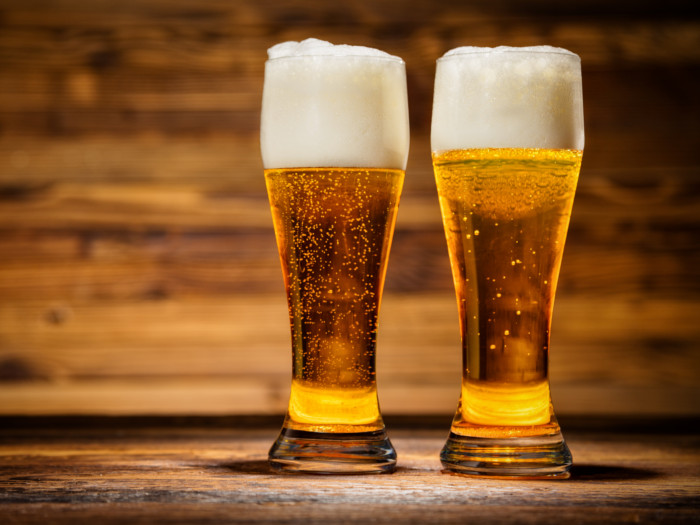A lager is a type of beer that comes in an array of flavors and styles, making it one of the most popular styles of beer in the world.
What is a Lager?
A lager is a type of beer that is aged, or ‘conditioned’, at low temperatures. Like other types of beer, it is made from fermented grain, but aging at low temperatures allows the yeast to survive longer, which brings out more flavors. This beer style can be both light and dark in color and is best when drunk cold. It usually has 3-6% ABV, although some styles are brewed to be stronger. One of the most calorie-packed alcoholic beverages, a pint of this beer can contain up to 240 calories.

Most lager beers have crisp and simple flavors. Photo Credit: Shutterstock
Types of Lager Beer
There are many different types of lager beer, these include pale, Vienna, amber, and specialty lager. They make for amazing refreshment on a summer’s day and are best served chilled. [1]
- Pale: Pale in both name and nature, this type is lightly grassy, a little sweet and watery.
- Vienna: This is an Austrian variety that is amber in color and has a malty flavor.
- Dark: Very rich and malty, these types are dark in color and tend to have a high ABV. [2]
- Amber: These provide a good middle ground between the dark and pale varieties; amber lagers are medium-bodied, tend to have roasted caramel and interesting malt flavors, and can vary in levels of bitterness.
- Specialty: For the curious beer drinkers, there is a fantastic range of specialty lagers, stretching from smoked to sour.
Lager Beer Nutrition Facts
A standard serving of a bottle or can of lager beer (12 ounces) can contain anywhere between 130 calories to 190 calories, depending on the type. Premium lagers can contain almost double the number of calories and maybe something you may want to steer away from if you are watching your calorie intake. Also, in terms of carbohydrate content, a light lager may contain around 5 grams of carbs while regular lagers can contain up to 9.5-15 grams of carbs. [3] [4]
Lager is made with hops, which contain a range of vitamins, such as B6, C, and E. Yeast, used in beer, can also be a source of potassium and dietary fiber and, when consumed in small quantities, alcohol is believed to be a good source of anti-oxidants. [5]
Alcohol Content (ABV): On average, 12 ounces of lager beer, or one bottle contains 5% ABV. However, it is advisable to keep an eye on the labels as certain brands of beer may have a much higher alcohol content than the average 4 percent to 6 percent. [6]
Risks & Side Effects
Moderation in alcohol consumption is key. The risks involved with drinking excessive alcohol can be short term such as violence and injuries to long-term health risks such as chronic diseases. According to the Centers for Disease Control and Prevention, people who should not drink alcohol include women who are pregnant, individuals younger than 21 years of age, and people who are recovering from alcoholism or cannot control the amount they drink. Also, it should be avoided by people who are planning to drive or any other activity that required focus and skill. However, different countries have different rules on alcohol purchase and consumption. [7]
